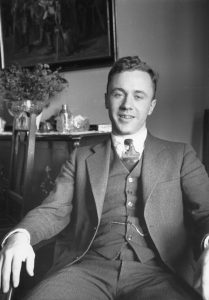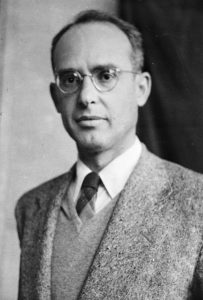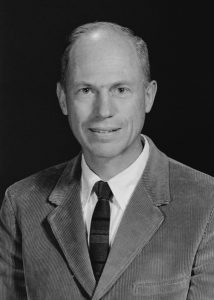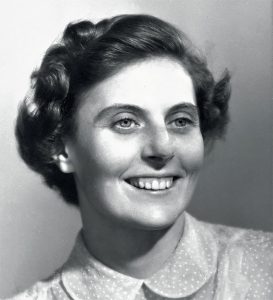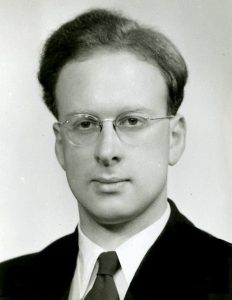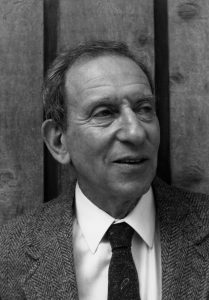Section III
Notable people in our history
John A. Wheeler
Nathan Rosen
Bryce S. DeWitt
Cécile DeWitt-Morette
Peter W. Higgs
Eugen Merzbacher
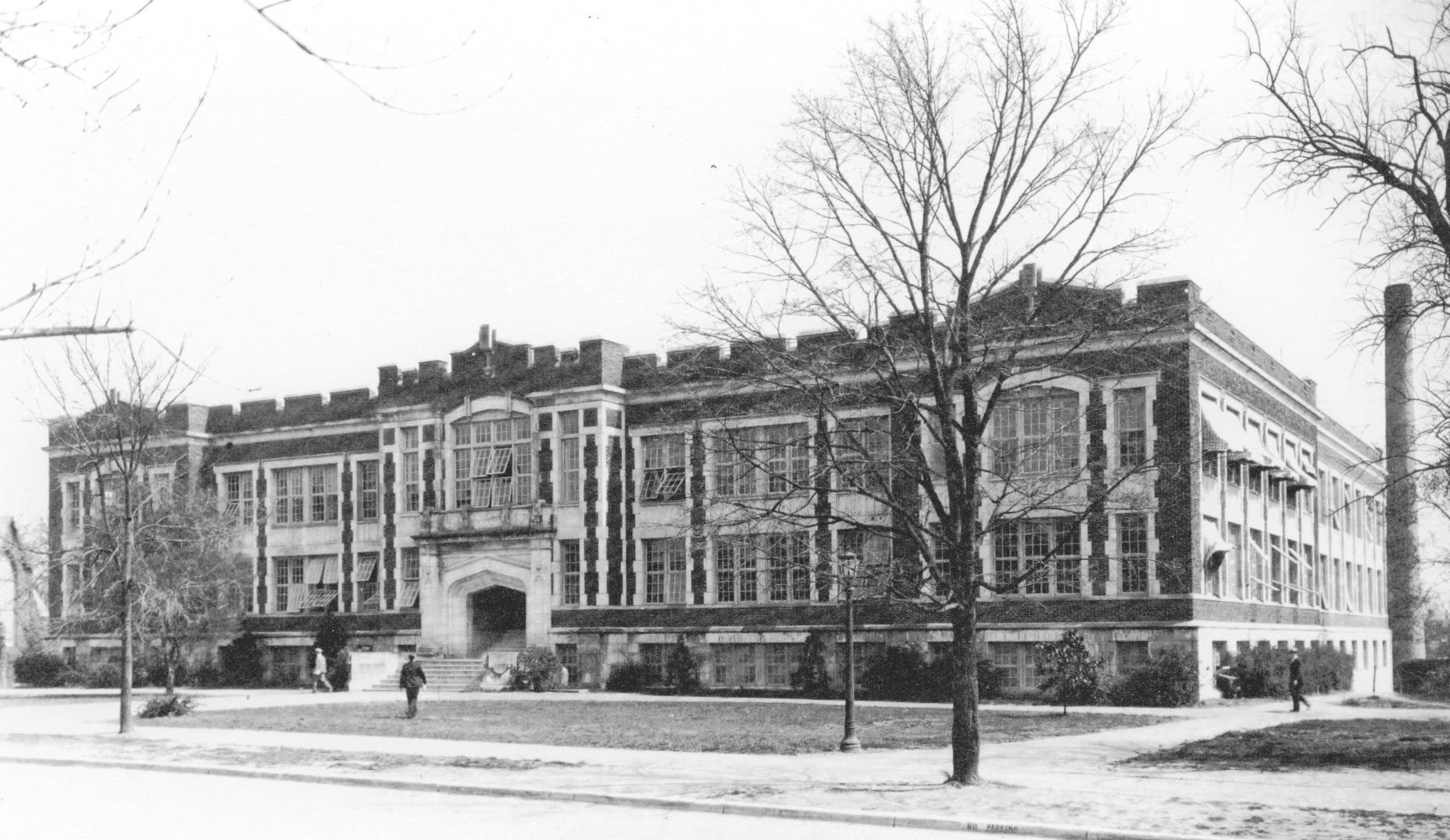
Born in Jacksonville, Florida, John A. Wheeler attended Johns Hopkins University and in 1933 received his Ph.D. after writing a dissertation on dispersion and absorption of helium. From 1934-35 he worked with Niels Bohr in Copenhagen. In 1937, he became an associate professor at the University of North Carolina at Chapel Hill, but left for an assistant professorship at Princeton University in 1938, where he was a professor until 1976. During this time, he introduced the concept of the S-matrix, which was later expanded by Heisenberg. He then worked with Edward Teller on the liquid drop model of the nucleus. Wheeler worked on the Manhattan Project in Chicago and Hanford. After the war, he returned to Princeton and took on a new graduate student, Richard Feynman. He continued to work on nuclear fusion related issues at Los Alamos and Princeton in the early 1950’s. In 1955, he changed his research to gravitation, inventing geometrodynamics and the concept of the geon. In 1957, at the Chapel Hill Conference, he introduced the idea of and the name “wormhole” and reconsidered gravitational collapse. He created the name “black hole” in a talk in 1967. Working closely with Bryce DeWitt on quantum gravity, he developed the Wheeler-DeWitt equation in 1967, later called by Hawking and others “the wave function of the universe”. Wheeler was a remarkable teacher and mentor. Two of his students, Richard Feynman and Kip Thorne, would go on to win Nobel Prizes. Some of his other students who became major figures in physics included Jacob Bekenstein, Hugh Everett, Charles Misner, Bill Unruh, Robert Wald, and Katharine Way. His most famous publications include the classic texts, Gravitation, written with Misner and Thorne, and Spacetime Physics together with Edwin Taylor. He also wrote and spoke widely on quantum information, the anthropic principle, and scientific research in general. In 1996, he moved to the University of Texas at Austin to create the Center for Theoretical Physics. He was awarded nearly every physics honor possible. These are the Einstein Award (1965), the Fermi Award (1968), the Franklin Medal (1969), the National Medal of Science (1970), the Einstein Prize (2003), and many others.
Born in Brooklyn, New York, Nathan Rosen was known for his work in quantum chemistry and his research with Albert Einstein. Rosen was educated at MIT, where he earned his bachelor’s degree in electrochemical engineering in 1929 and his doctorate in physics in 1932. As a student, he produced the first reliable quantum mechanical calculation of the structure of the hydrogen molecule. During the Depression, Rosen held several postdoctoral positions, including as an assistant to Einstein at the Institute for Advanced Study. In 1935 Rosen, Einstein, and another of Einstein’s assistants, Boris Podolsky, published their controversial EPR paper in the Physical Review, in which they claimed quantum theory was incomplete because the wavefunction doesn’t provide a complete description of reality. Rosen then went on to study the theory of gravitation, for which he developed a concept concerning wormholes called the Einstein–Rosen bridge and co-wrote a paper on gravitational waves with Einstein. From 1936 to 1938, Rosen worked as a theoretical physics professor at Kiev State University in the Soviet Union. After appointments at MIT, Black Mountain College in North Carolina, and the University of North Carolina at Chapel Hill (1941-1952), Rosen accepted a physics professorship at Technion–Israel Institute of Technology in Haifa, where he founded Technion’s Institute of Theoretical Physics. Rosen remained at Technion until he retired in 1979 as Gerard Swope Professor Emeritus of Physics. He continued to teach and publish in scientific journals well after his retirement. Among his many accomplishments, Rosen was a founder of the Israel Physical Society and the Israel Academy of Sciences and Humanities, and he helped establish the engineering school at Ben-Gurion University of the Negev in Beersheba. He died at age 86 in 1995.
Born in Dinuba, California, Bryce S. DeWitt received his undergraduate degree from Harvard in 1943 and then, after serving as a naval aviator in World War II, went back to Harvard to get his Ph.D. under Julian Schwinger (1965 Nobel Laureate) writing his dissertation on the theory of gravitational interactions. In 1949-50, he was a member of the Institute for Advanced Study at Princeton, where he met and married Cécile Morette, a gifted young French mathematical physicist who had been invited to Princeton by Oppenheimer. After years in Zurich, the Tata Institute in Bombay, and the Radiation Laboratory at Livermore, he came to Chapel Hill in 1956 to head the Institute of Field Physics and to become the Agnew Bahnson, Jr. Professor of Physics until 1971, when he left to be a Professor of Physics and to lead the Center for Relativity Theory at the University of Texas at Austin. Most would consider him to be the father of numerical relativity and of quantum gravity. While at Livermore he saw the future of computers in physics, which he would champion in later years for the study of black hole collisions. This work would ultimately lead to the methods used in finding gravitational radiation by the LIGO project. In 1957, in Chapel Hill, he and Cécile organized the seminal conference of that decade, The Role of Gravitation in Physics. This event restarted the interest in numerical relativity, general relativity, and quantum gravity. Further, Everett’s ideas that eventually led to the Many-Universes Interpretation of Quantum Mechanics school of thought came out in the writings from the conference. In 1963, he gave a series of classic lectures entitled Dynamical Theory of Groups and Fields at the renowned Les Houches summer school on Relativity, Groups, and Topology. His other masterworks were The Quantum Theory of Gravity I, II, and III in Physical Review (1967), Quantum Field Theory in Curved Spacetime in Physics Reports (1975), the Physics Today article , Quantum Mechanics and Reality (1970), and the two volume, The Global Approach to Quantum Field Theory (2004). Over the years, Bryce was awarded many honors, though he cared very little for such, accepting them only when he knew they might help others. He won first price for an essay for the Gravity Research Foundation, was a Guggenheim Fellow, won the Dirac Medal, the Marcel Grossman Award, the Pomeranchuk Prize, and the Einstein Prize. He was also a Fellow of the American Physical Society.
Born in Paris, France, Cécile DeWitt-Morette received her License des Science from the University of Caen in 1943. She entered the University of Paris and, while working on her doctorate, joined the Centre National de la Recherche Scientifique directed by Frederic Joliot-Curie. In 1947 she received her Ph.D. with a dissertation on meson production. She was invited to be a member of the Institute for Advanced Study at Princeton by Oppenheimer in 1948. There, she worked with Freeman Dyson, Raoul Bott, and Richard Feynman, and met her future husband, Bryce DeWitt. During that time, she even walked mornings to work with Einstein. Furthermore, she had the goal of rejuvenating physics in war-torn Europe and in 1951 founded the renowned summer school for physics in Les Houches located in the French Alps. She ran the school for the next twenty-two years. The school brought together leading physicists and promising students from Europe, the U.S., and elsewhere for lectures and discussions on the most important topics of the time. At least fifty of the school’s lecturers and students went on to win The Nobel Prize, the Fields Medal, and other major awards and honors. These include J. Bardeen, A. Bohr, E. Fermi, R. Feynman, M. Gell-Mann, G. ’t Hooft, W. Pauli, A. Salam, J. Schwinger, K. Thorne, and many more. Luminaries like Stephen Hawking, Bryce DeWitt, and John Wheeler also lectured there. Cécile was the lead organizer of The Role of Gravitation in Physics Conference at the University of North Carolina – Chapel Hill in 1957 while she was co-directing the Institute of Field Physics there. She was an instructor in the department from 1956-1971 but was offered a position at the University of Texas at Austin after UNC failed to promote her despite her significant contributions to physics and the department. The DeWitts then left together with their students in January of 1972. At Texas, she became the Blumberg Centennial Professor. She wrote and edited a number of books on mathematics and physics, including the two volumes of Analysis, Manifolds, and Physics in 1977 and 1989 with Y. Choquet-Bruhat. Cécile was a leading expert on path integral formulations in physics. She even co-organized an expedition to Mauritania in 1972 to retest the bending of light during a total solar eclipse experiment. Cécile was elected an officer in the French Legion d’honneur (2011), awarded the American Society of the French Legion of Honor (2007) and the Marcel Grossman Award (2000).
Born in Newcastle upon Tyne, England, Peter W. Higgs attended King’s College, London and in 1954 received his Ph. D., after writing a thesis on the theory of molecular vibrations. After finishing his doctorate, Higgs held various positions, first at the University of Edinburgh, then at Imperial College London and University College London, before returning to the University of Edinburgh in 1960. He spent the 1965-1966 academic year on leave at the Institute of Field Physics at the University of North Carolina at Chapel Hill. He retired in 1996 and became emeritus professor at the University of Edinburgh. In the mid-1960s, Higgs suggested that spontaneous broken symmetry in electroweak theory could explain the origin of mass of elementary particles in general and of the bosons that mediate weak interactions in particular. In the paper he wrote while on leave working at UNC, he explicitly displayed “the behavior of the simplest possible relativistic field theory which combines spontaneous breakdown of symmetry under a compact Lie group with the gauge principle.” According to this so-called Higgs mechanism proposed by Higgs (and several other physicists around the same time), elementary particles acquire their mass from their interactions with the Higgs field that permeates all space. Higgs also predicted the existence of a massive scalar particle. In 2012 physicists at CERN discovered the predicted fundamental particle (known as the Higgs boson), thereby unveiling the final piece of the standard model of elementary particles. In recognition of the central role his work has played in our understanding of the origin of the mass of subatomic particles and the quest to unify the forces of nature, Higgs was honored with a number of awards including the Hughes Medal (1981), the Rutherford Medal (1984), the Dirac Medal (1997), the High Energy and Particle Physics Prize (1997), the Wolf Prize in Physics (2004), the J.J. Sakurai Prize (2010), the Higgs Medal (2012), the Copley Medal (2015)and the Nobel Prize in Physics (2013). Higgs received numerous honorary degrees including one from the University of North Carolina at Chapel Hill (presented by the Chancellor of UNC in Higgs’ hometown Edinburgh, Scotland, on March 3, 2015).
Born in Berlin, Germany, Eugen Merzbacher moved to Turkey in 1935 where he earned his undergraduate degree in physics at Istanbul University and then taught high school chemistry and physics. In 1947, he enrolled at Harvard, where he wrote his doctoral thesis on beta-decay theory under the direction of Julian Schwinger (1965 Nobel Laureate). After a brief stay at Princeton’s Institute for Advanced Study, Eugen moved to Duke in 1951 to provide theoretical support for its new nuclear physics program. He joined our UNC departmental faculty in 1952, was named a Kenan Professor of Physics in 1969, and served as our Department Chair from 1977 to 1982. With colleagues at Duke and NC State, he began the Triangle Universities Nuclear Laboratory program in 1965. He also held numerous visiting positions, among them at the Niels Bohr Institute in Copenhagen in 1959–60 and as a Humboldt senior scientist at the University of Frankfurt in 1977. Eugen also had a long, distinguished career of service in regional and national roles for the American Physical Society, including that of APS president in 1990. Noted for his development of the plane-wave Born approximation for creating inner-shell vacancies in ion–atom collisions, Eugen was among the first to recognize that the dynamics of those interactions, including the electromagnetic radiation generated, could be understood as isolated atomic energy levels evolving into quasi-molecular levels and back again. He was widely known for his Quantum Mechanics text, and two of his articles on quantum mechanics formalism were deemed by readers to be among the 50 most important published by the American Journal of Physics in its first 50 years. The AAPT presented him with its Oersted Medal in 1992 in recognition of his contributions to national physics education. In 1999, he was elected chair of the physics section of the AAAS. The APS’s Southeastern Section presented him with its Francis G. Slack Award in 2010 for exemplary service to its regional physics community.


